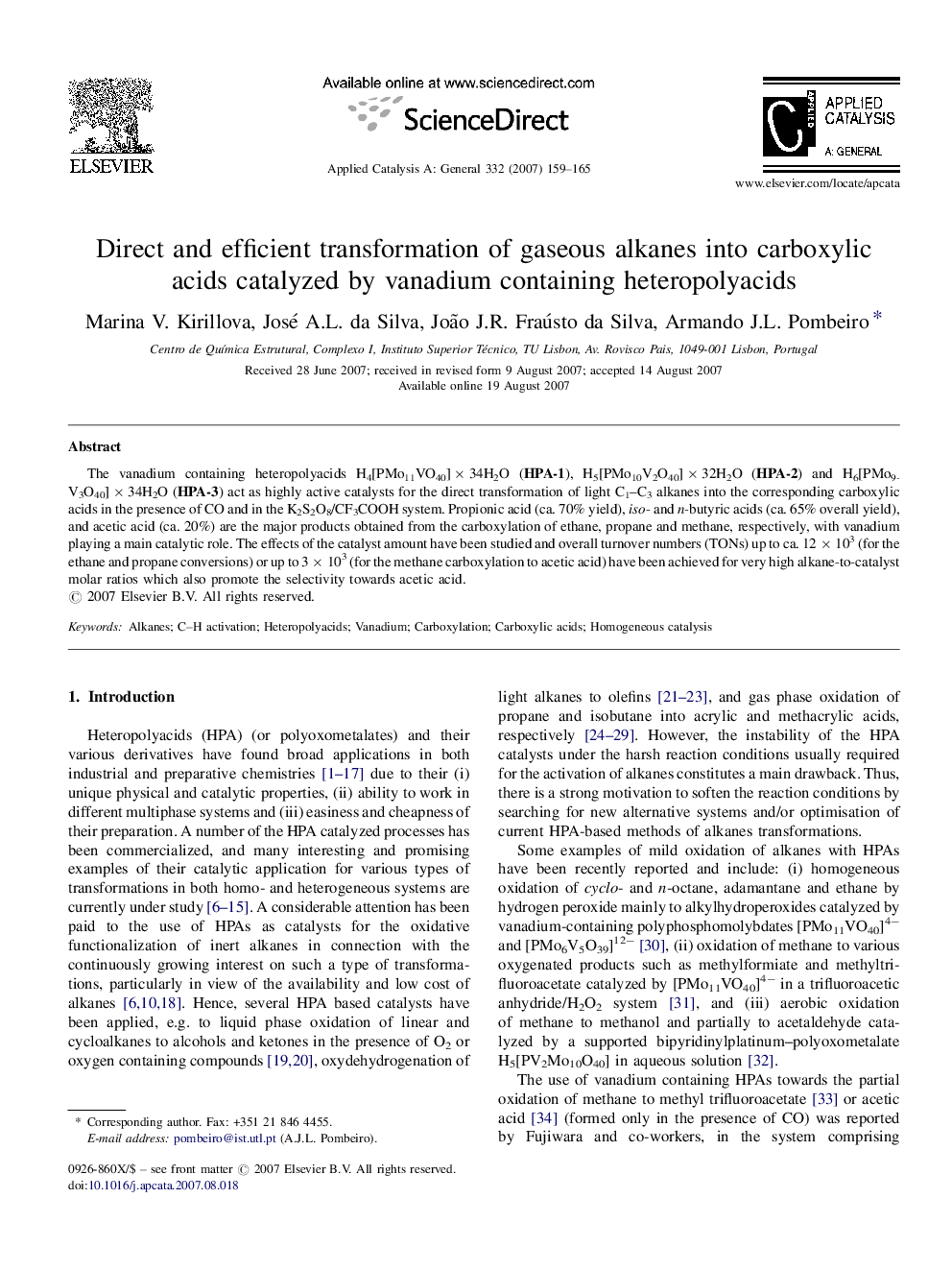| Article ID | Journal | Published Year | Pages | File Type |
|---|---|---|---|---|
| 43437 | Applied Catalysis A: General | 2007 | 7 Pages |
The vanadium containing heteropolyacids H4[PMo11VO40] × 34H2O (HPA-1), H5[PMo10V2O40] × 32H2O (HPA-2) and H6[PMo9V3O40] × 34H2O (HPA-3) act as highly active catalysts for the direct transformation of light C1–C3 alkanes into the corresponding carboxylic acids in the presence of CO and in the K2S2O8/CF3COOH system. Propionic acid (ca. 70% yield), iso- and n-butyric acids (ca. 65% overall yield), and acetic acid (ca. 20%) are the major products obtained from the carboxylation of ethane, propane and methane, respectively, with vanadium playing a main catalytic role. The effects of the catalyst amount have been studied and overall turnover numbers (TONs) up to ca. 12 × 103 (for the ethane and propane conversions) or up to 3 × 103 (for the methane carboxylation to acetic acid) have been achieved for very high alkane-to-catalyst molar ratios which also promote the selectivity towards acetic acid.
Graphical abstractThe vanadium containing heteropolyacids H4[PMo11VO40] × 34H2O (HPA-1), H5[PMo10V2O40] × 32H2O (HPA-2) and H6[PMo9V3O40] × 34H2O (HPA-3) act as highly active catalysts for the direct transformation of light C1–C3 alkanes into the corresponding carboxylic acids in the presence of CO and in the K2S2O8/CF3COOH system. Figure optionsDownload full-size imageDownload as PowerPoint slide
